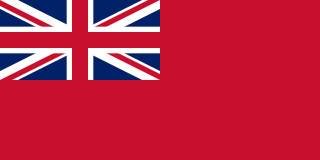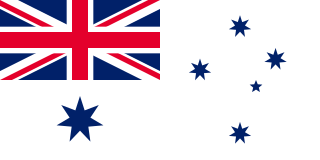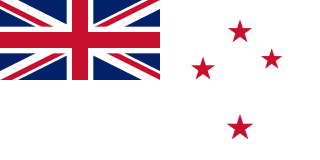
The Union Jack, or Union Flag, is the de facto national flag of the United Kingdom. Although no law has been passed making the Union Jack the official national flag of the United Kingdom, it has effectively become such through precedent. It is sometimes asserted that the term Union Jack properly refers only to naval usage, but this assertion was dismissed by the Flag Institute in 2013 following historical investigations. The flag has official status in Canada, by parliamentary resolution, where it is known as the Royal Union Flag. It is the national flag of all British overseas territories, being localities within the British state, or realm, although local flags have also been authorised for most, usually comprising the blue or red ensign with the Union Flag in the canton and defaced with the distinguishing arms of the territory. These may be flown in place of, or along with the national flag. Governors of British Overseas Territories have their own personal flags, which are the Union Flag with the distinguishing arms of the colony at the centre. The Union Flag also appears in the canton of the flags of several nations and territories that are former British possessions or dominions, as well as in the flag of the US State of Hawaii, which has no such connection.

The flag of England is derived from Saint George's Cross. The association of the red cross as an emblem of England can be traced back to the Late Middle Ages when it was gradually, increasingly, used alongside the Royal Banner. It became the only saint's flag permitted to be flown in public as part of the English Reformation and at a similar time became the pre-eminent maritime flag referred to as a white ensign. It was used as a component in the design of the Union Jack in 1606.

The flags of the Confederate States of America have a history of three successive designs during the American Civil War. The flags were known as the "Stars and Bars", used from 1861 to 1863; the "Stainless Banner", used from 1863 to 1865; and the "Blood-Stained Banner", used in 1865 shortly before the Confederacy's dissolution. A rejected national flag design was also used as a battle flag by the Confederate Army and featured in the "Stainless Banner" and "Blood-Stained Banner" designs. Although this design was never a national flag, it is the most commonly recognized symbol of the Confederacy.

The Red Ensign or "Red Duster" is the civil ensign of the United Kingdom of Great Britain and Northern Ireland. It is one of the British ensigns, and it is used either plain or defaced with a badge or other emblem, mostly in the right half.

The current state flag of Tasmania was officially adopted following a proclamation by Tasmanian colonial Governor Sir Frederick Weld on 25 September 1876, and was first published in the Tasmanian Gazette the same day. The governor's proclamation here were three official flags, they being the Governor's flag, the Tasmania Government vessel flag, and a Tasmania merchant flag. Up until 1856 when Tasmania was granted responsible self-government, the Union flag and the British ensign were primarily used on state occasions.

The flag of New Zealand, also known as the New Zealand Ensign, is based on the British maritime Blue Ensign – a blue field with the Union Jack in the canton or upper hoist corner – augmented or defaced with four red stars centred within four white stars, representing the Southern Cross constellation.

The flag of Solomon Islands consists of a thin yellow diagonal stripe divided diagonally from the lower hoist-side corner, with a blue upper triangle and green lower triangle, and the canton charged with five white stars. Adopted in 1977 to replace the British Blue Ensign defaced with the arms of the protectorate, it has been the flag of Solomon Islands since 18 November of that year, eight months before the country gained independence. Although the number of provinces has since increased, the number of stars on the flag that originally represented them remained unchanged.

In vexillography, the canton is a rectangular emblem placed at the top left of a flag, usually occupying up to a quarter of a flag's area. The canton of a flag may be a flag in its own right. For instance, British ensigns have the Union Jack as their canton, as do their derivatives such as the national flags of Australia and New Zealand.

The flag of Victoria, symbolising the state of Victoria in Australia, is a British Blue Ensign defaced by the state badge of Victoria in the fly. The badge is the Southern Cross surmounted by an imperial crown, which is currently the St Edward's Crown. The stars of the Southern Cross are white and range from five to eight points with each star having one point pointing to the top of the flag. The flag dates from 1870, with minor variations, the last of which was in 1953. It is the only Australian state flag not to feature the state badge on a round disc.

The current state flag of New South Wales was officially adopted by the government of New South Wales in 1876.

The state flag of Queensland is a British Blue Ensign with the state badge on a white disc added in the fly. The badge is a light blue Maltese Cross with an imperial crown in the centre of the cross. The flag dates from 1876, with minor variations, and the badge was designed by William Hemmant, the Colonial Secretary and Treasurer of Queensland in 1876.

The Australian White Ensign is a naval ensign used by ships of the Royal Australian Navy (RAN) from 1967 onwards. From the formation of the RAN until 1967, Australian warships used the British White Ensign as their ensign. However, this led to situations where Australian vessels were mistaken for British ships, and when Australia became involved in the Vietnam War, the RAN was effectively fighting under the flag of another, uninvolved nation. Proposals were made in 1965 for a unique Australian ensign, which was approved in 1966, and entered use in 1967.

The Australian Red Ensign is the flag used by the Australian merchant navy, as distinct from the Australian National Flag used by the Commonwealth Government. Both flags resulted from the Commonwealth Government's 1901 Federal Flag Design Competition which required two entries: a flag for official Commonwealth Government use and another for the merchant navy. The winning design for the merchant navy was based on the traditional British Red Ensign and featured the Southern Cross and Commonwealth Star.

The Australian Federation Flag, also known as the New South Wales Ensign, was the result of an attempt in the 1830s to create a national flag for Australia, which was divided at the time into several British colonies.

The flag of Australia is based on the British Blue Ensign—a blue field with the Union Jack in the upper hoist quarter—augmented with a large white seven-pointed star and a representation of the Southern Cross constellation, made up of five white stars. Australia also has a number of other official flags representing its people and core functions of government.

The flag of the governor-general of New Zealand is an official flag of New Zealand and is flown continuously on buildings and other locations when a governor-general is present. The flag in its present form was adopted in 2008 and is a blue field with the shield of the New Zealand coat of arms royally crowned. The official heraldic description is "A flag of a blue field thereon the Arms of New Zealand ensigned by the Royal Crown all proper".

The Star of India refers to a group of flags used during the period of the British Raj in the Indian subcontinent. India had a range of flags for different purposes during its existence. The Princely states had their own flags which were to be flown alongside the British flag as a symbol of suzerainty. The official state flag for use on land was the Union Flag of the United Kingdom and it was this flag that was lowered on Independence Day in 1947. The flag of the governor-general of India was defaced with the Star of India. The civil ensign and naval ensign were the Red Ensign or Blue Ensign, respectively, defaced with the Star of India emblem.

The Colony of New Zealand was a British colony that existed in New Zealand from 1841 to 1907. It was created as a Crown colony. The power of the British government was vested in the governor of New Zealand, but the colony was granted self-government in 1852. The New Zealand Constitution Act 1852 was passed and the first parliament was elected in 1853; the first responsible government was formed in 1856. The Colony of New Zealand had three capitals: Old Russell (1841), Auckland (1841–1865), and Wellington. In 1907, the colony became the Dominion of New Zealand with more explicit recognition of self-government within the British Empire.

The Indian Naval Ensign, also referred to as the Indian White Ensign, or Nishaan, is the naval ensign of the Indian Navy, used aboard Indian naval vessels, shore establishments and naval air stations as its principal form of maritime identification.

The New Zealand White Ensign is a naval ensign used by ships of the Royal New Zealand Navy (RNZN) from 1968. Based on the Royal Navy's White Ensign, it features the Southern Cross from the New Zealand national flag in place of the Saint George's Cross. One of the earliest flags associated with the country, that used by the United Tribes of New Zealand, was a white ensign. This was replaced by the Union Flag when New Zealand became a British colony. A blue ensign with the Southern Cross was introduced for ships of the colonial government in 1867 and this soon became a de facto national flag. Ships in New Zealand naval service wore the Royal Navy's White Ensign until 1968 when the distinct New Zealand White Ensign was introduced. The ensign was implemented out of a desire to distinguish New Zealand vessels from those of the Royal Navy and this decision is regarded as an important step in the development of the RNZN.



















